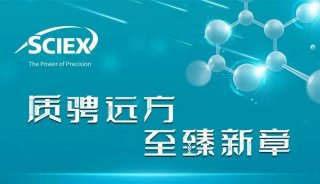The OP9-DL1 System: Generation of T-Lymphocytes from Embryonic-4
TROUBLESHOOTING
Problem: The OP9 cells are more than 80%-90% confluent.
Solution: It is important when creating working stocks of OP9 cells for freezing that the cells are never allowed to become more than 80%-90% confluent. Monitor cell density to avoid exceeding this level of confluency. If the OP9 cells are too confluent when a co-culture is in progress, it is fine to use these OP9 cells for an ongoing experiment. However, do not use these cells for making stocks.
Problem: The OP9 cells are becoming adipocytic (full of fatty globules).
Solution: This occurs when the OP9 cells become more than 80%-90% confluent. Monitor cell density to avoid exceeding this level of confluency. Although the presence of some adipocytic cells will not affect the culture, large numbers of these cells will have a negative impact. Some lots of fetal bovine serum (FBS) can make the cells turn adipocytic more quickly. In addition,avoid FBS substitutes or growth supplements, as these will increase the number of adipocytic cells.
Problem: The OP9 cells are growing too quickly.
Solution: Reduce the amount of serum. When an almost confluent plate is split 1-to-4 or 1-to-5, the cells should be confluent again in 2 d. If the cells are growing more rapidly than this,reduce the serum and discard these cells from the working stocks.
Problem: The OP9 cells did not recover well after thawing them.
Solution: Do not store the frozen OP9 cells at –80°C for extended periods, because this will decrease the recovery of the cells when thawed. It is best to store them in liquid nitrogen. Freeze cells in 90% FBS and 10% DMSO (i.e., freezing medium for OP9 cells).
Problem: The OP9 cells are not irradiated and will become overconfluent.
Solution: It is more important that the cells are not overconfluent when seeding with hematopoietic cells than at later time points. The co-cultures are passaged every 4-5 d to take care of this issue, because the OP9 cells will only stop proliferating when fully confluent, due to contact inhibition. During the passage steps, the cells are filtered out with cell strainers, to remove the excess number of OP9 cells. Although this does not eliminate all of the OP9 cells, it does limit them, and the remaining cells will not affect the co-culture.
Problem: There is no precise seeding cell count for the OP9 cells.
Solution: It is difficult to use a particular number of OP9 cells because the cells will grow at different rates. The important issue is if the cells are near confluent, rather than if there is a specific number of cells on the plate.
Problem: The ESC single cell suspension contains mEF feeder layer.
[Step 30]
Solution: Because the mEF feeder layer is irradiated, these cells will not interfere with the co-culture.
Problem: The monolayer is breaking up as the semiadherent cells are being washed off the dish.
[Step 37]
Solution: It is acceptable if some of the monolayer is washed off the dish. Because the cells will be filtered, using a cell strainer, these clumps will not pass though the filter.
Problem: The OP9 monolayer peels away from the dish.
Solution: The OP9 cells were overconfluent at the time of seeding; the co-cultures should be passaged onto new OP9 cells.
Problem: The OP9-DL1 cells appear in the FL1 channel.
Solution: The OP9-DL1 cells also express green fluorescent protein (GFP) as part of the integrated retroviral bicistronic construct from which both Dll1 and GFP are coexpressed. During flow cytometric analysis, the OP9-DL1 will fluoresce in the FITC (FL1) channel. These cells can be gated-out using forward and side-scatter criteria, because these cells are larger and more granular than hematopoietic cells. Additionally, staining for CD45 expression can be used to conclusively detect hematopoietic cells as opposed to OP9-DL1 cells (see Fig. 3).
Problem: Bone marrow cultures show delayed kinetics generating CD4+ CD8+ cells.
Solution: The recommended IL-7 final concentration is 1 ng/mL (Step 74). However, this concentration can be lowered to 0.1-0.5 ng/mL starting on day 12 of the culture. Reduction of IL-7 will enhance the differentiation of CD4+ CD8+ cells from the earlier progenitor subset.
Problem: Natural killer (NK) cells do not proliferate or appear in the culture.
Solution: Adding IL-2 (1-10 ng/mL) or IL-15 (5-10 ng/mL) to the culture starting at day 8 for the ESC cultures and day 0 for the bone marrow and fetal liver cultures will allow for more a robust NK cell population to be generated.
Problem: The cultures appear to be contaminated.
Solution: Discard the co-cultures, and decontaminate the work areas both inside and outside the biosafety cabinet and incubator. To prevent contamination when working with ex vivo material (such as bone marrow), normocin and fungizone can be used, but these agents may interfere with ESC cultures. Gentamicin can be added to the OP9 medium to limit potential contamination in the cultures.
DISCUSSION
The differentiation of T- and B-lineage cells from multiple sources of stem cells can be readily studied in vitro using the OP9-DL1 or OP9 co-culture system, respectively (Zúñiga-Pflücker 2004). This methodology has been used by several hundred laboratories to address numerous questions, because it is an effective way to determine lymphocyte lineage commitment, regulation of lymphocyte differentiation, and other aspects of lymphocyte development (de Pooter and Zúñiga-Pflücker 2007). In particular, the OP9-DL1 system has been useful in addressing questions about the cellular and molecular regulation of T-lymphocyte lineage commitment, pre-T-cell receptor signaling (β-selection), functional characteristics of progenitor T-cells, and maturation of functional CD8 T-cells (for review, see de Pooter and Zúñiga-Pflücker 2007). However, a few challenges remain, such as whether CD4 T-cells can be readily generated and determination of the rules regarding positive and/or negative selection of T-cells in this culture system. Although the present protocol only addresses the use of mouse stem cells, this system has been successfully adapted for the generation of T-lineage cells from human HSCs (La Motte-Mohs et al. 2005; Awong et al. 2008).
Although OP9 cells provide a robust stromal cell monolayer to support hemato-lymphopoiesis, OP9 cells should not be kept in continuous culture for extended periods of time (>6 wk) beforeinitia, ting a co-culture. Extended periods of culturing will increase the likelihood that the cells will deteriorate and become less effective. Thus, it is highly recommended that a co-culture be started within 2 wk of thawing the OP9 cells, which has the added advantage that the same OP9 cells can be used for the entire co-culture period. Another variable to manage is the FBS used in the co-cultures, which can affect the growth and proliferation of the co-cultures. Test several lots of serum to determine the one that performs well and yields results similar to those shown in these protocols (Figs. 3, 4, and 5).
The differentiation of lymphocytes from ESCs can be readily observed 10-12 d after the initiation of the co-cultures (Fig. 3). Prior to this stage, the majority of the cellular subsets arecomprised of erythro-myeloid cell lineages. Beyond the second week of co-culture, B- or T-lineage cells (OP9 or OP9-DL1 co-cultures, respectively) predominate and expand rapidly. These cells display and follow a normal pattern of lineage differentiation, such as lineage-specific differentiation checkpoint events, to yield functional lymphocytes (Schmitt and Zúñiga-Pflücker 2002; Schmitt et al. 2004; de Pooter et al. 2006).
As seen in Figures 4 and 5, the differentiation of fetal liver HSCs to the B- or T- cell lineage takes place with faster temporal kinetics than that of bone marrow HSCs. Additionally, ESC co-cultures, as expected, require a much longer period of time to yield lymphocytes because of the additional time involved in the initial hematopoietic induction and differentiation steps when starting from an ESC (Fig. 3). Although different stem cells give rise to lymphocytes with different kinetics, the overall differentiation steps follow a similar pattern. Additionally, if lymphocyte progenitors (CD117+ CD127+) from the bone marrow or thymus or more downstream progenitors such as pre-B- (CD117+ CD19+) or pre-T-cells (CD44+ CD25+ CD3–CD4– CD8–) are used, then the differentiation kinetics are accelerated from those shown in Figures 4 and 5.
ACKNOWLEDGMENTS
We thank the many members of the Zúñiga-Pflücker lab who over the years have helped to develop, test, and optimize the methods listed above. In particular, we are grateful to James Carlyle, Sarah Cho, Renée de Pooter, Dzana Dervovic, Ross La Motte-Mohs, Thomas Schmitt, Gladys Wong, and John Xu. Additionally, we thank Korosh Kianizad and Tina Wang for theirhelpful comments. We also appreciate the kind assistance and generosity of Tasuko Honjo and Toru Nakano for initially sharing the OP9 cells and expertise with us. These protocols were developed with support from the Canadian Institutes of Health Research and with funds from the Canadian Cancer Society.
-
产品技术

-
企业风采










